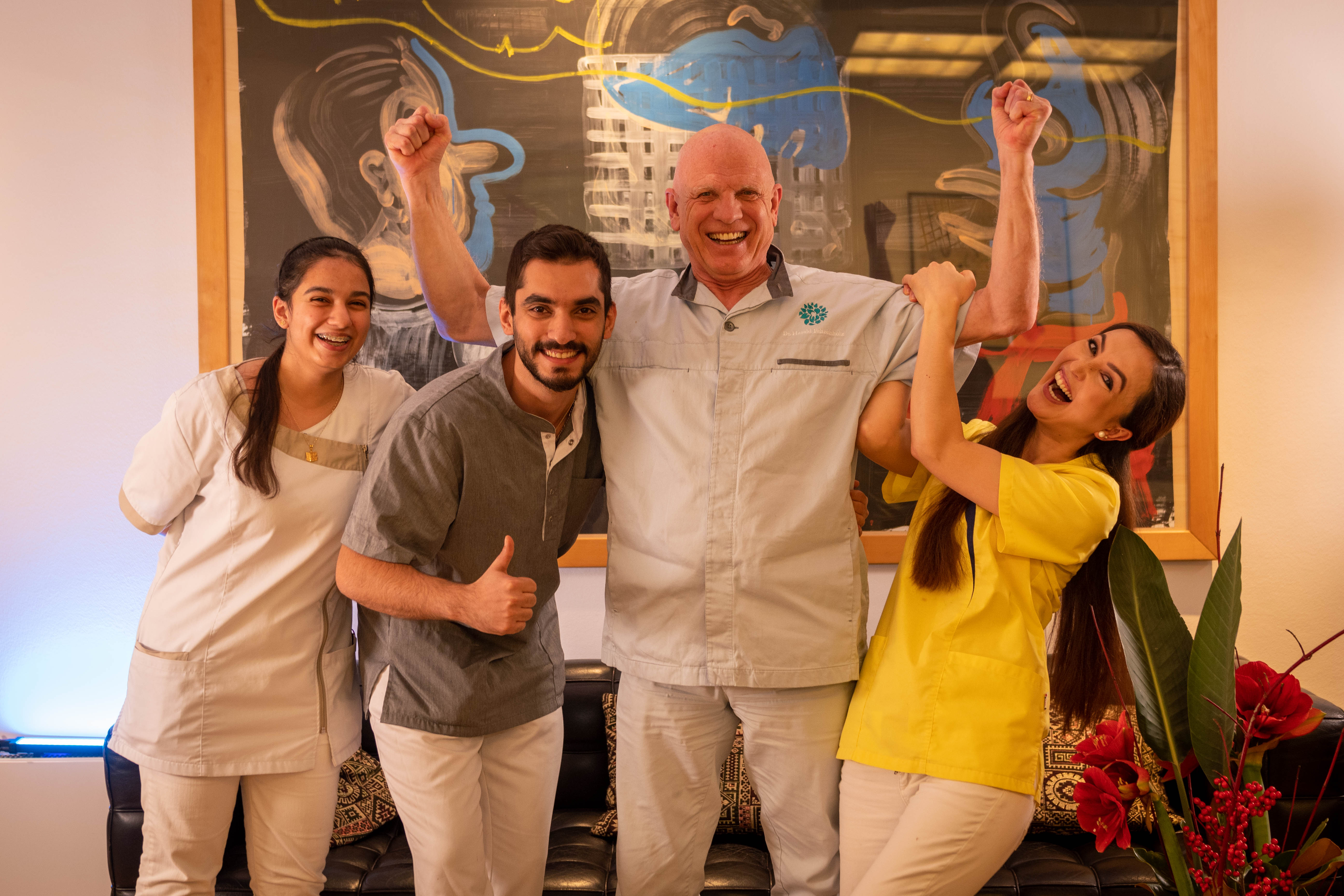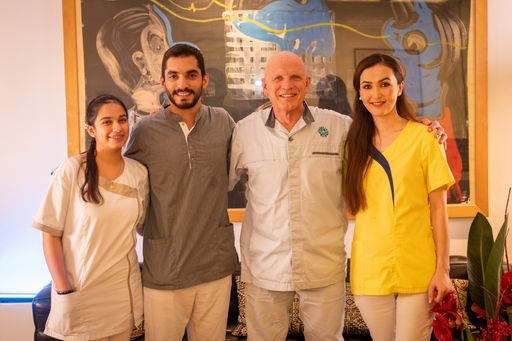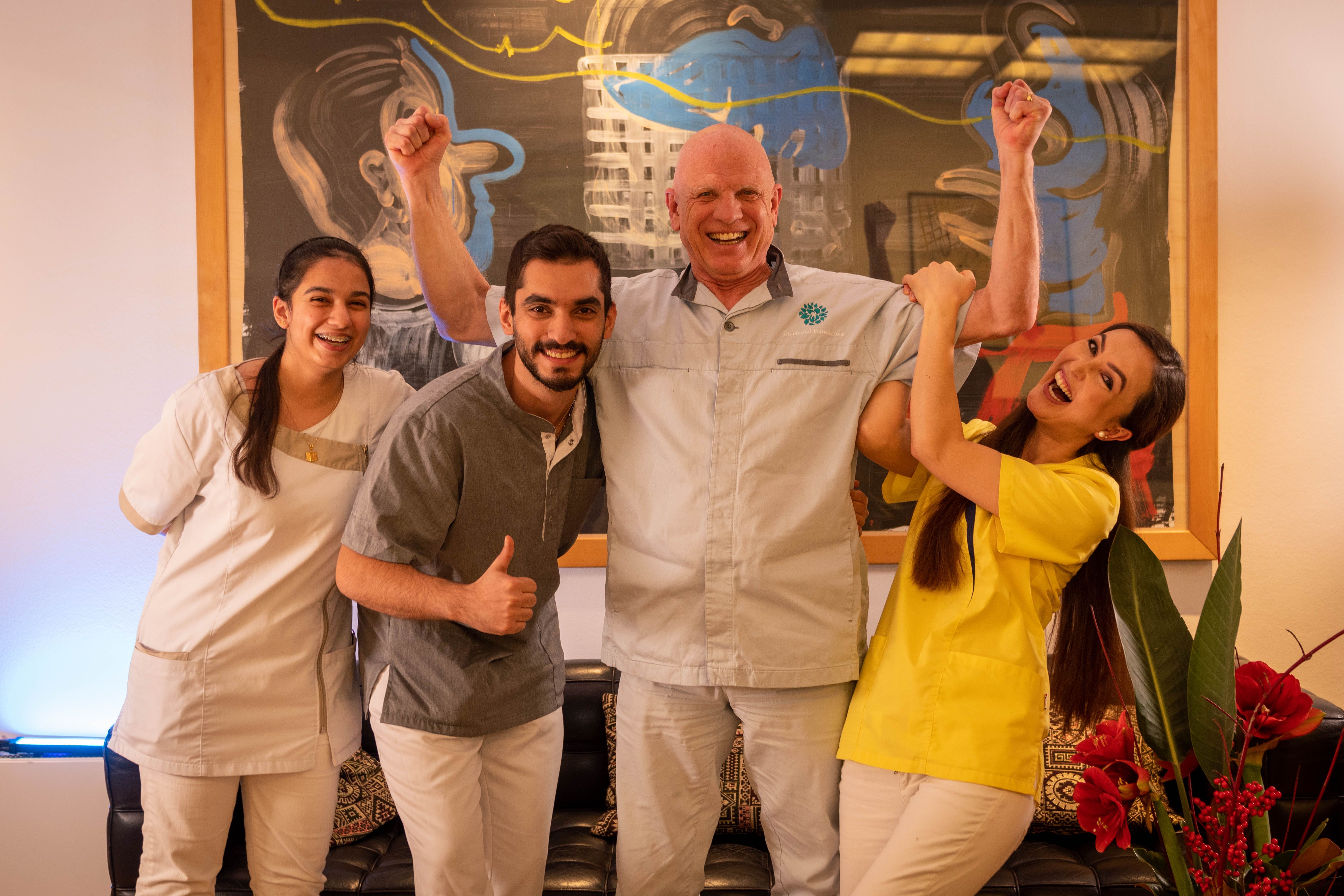
How did you get into dentistry, and implantology in particular?
When I was 18, I wanted to become an archeologist. As things became more concrete, however, I realized that I also wanted to earn money in my profession. Apparently, I already knew at school that I would become a dentist. In philosophy class, our teacher once asked what grades we would like to have, to which I replied, "I probably deserved an E, but I would like to have a B anyway. If I want to become a dentist, I need a good certificate." That's how it turned out: I studied dentistry in Mainz in Germany and graduated with a state examination.
I then returned to my home in Bavaria. Following my civil service at the Klinikum Rechts der Isar in Munich, where I did my basic surgical training and came into contact with subperiosteal implants (which I found horrible), I was offered a job with Dr. Peter Kraus – not the pop singer, but a great dentist. From him, I learned to deliver great prosthetics, through which I eventually found my way into implant dentistry. In the mid-eighties, I had my first clinical experience with the Friadent implant system with Axel Kirsch before I heard about a certain Mr. Brånemark in 1988. In 1989, after completing many CTC courses (Clinical Training Courses), among others in Gothenburg and Stockholm, I was one of the first dentists in Munich to place Brånemark System implants.
When did you switch from titanium to ceramic implant systems?
Like everyone, I have tried out a wide variety of titanium implants over many years. At some point, the desire to open a private practice became increasingly stronger, which usually involves a change of location. Around 2001, I decided to move to Vienna with my wife at the time, who was Austrian. While I initially focused on prosthodontics, I set up a new private practice with a focus on implantology located at Vienna's Kohlmarkt in 2007. In 2008, my friend Johan Feith from Munich asked me if I would like to try out his specially developed ceramic implant system made of zirconia. I was immediately hooked and saw this as a great opportunity to set myself apart from others – no one in Vienna had placed ceramic implants at that time. So I tried his ZV3 implant system, which is now known as the Patent™ Dental Implant System. Four years later, I made the complete switch from titanium to ceramics. I tried different ceramic implants, but I always returned to the Patent™ Dental Implant System because it is “super-easy" to work with and works great in clinical practice. Today, we no longer use metals in my practice — only healthy implant materials like zirconia.
What was your first experience with the Patent™ Dental Implant System? Is the surgical handling very different from titanium systems?
I placed the first two Patent™ Implants in the right upper jaw of a patient. The first of these was placed normally in the bone. However, since the posterior implant had only about 5 to 6 mm of bone left to the sinus, I decided to perform a sinus lift in conjunction with the implant placement. I acted exactly as I would have with titanium implants. There was no difference at all – everything worked exactly the same. I remember that this patient had been very health-conscious and had specifically expressed the wish for a metal-free restoration. This was the starting point for me to finally use zirconia in clinical practice. Thereafter, I resorted to titanium from time to time out of pure habit. However, due to increasing complications, I decided to switch completely to ceramic implants, because there are significantly fewer problems with them. Once ceramic implants have osseointegrated, there are usually no more complications. With the Patent™ Dental Implant System, for example, I have not experienced a single case of peri-implantitis in my surgery to date.
Are patients today actively seeking out healthier alternatives to traditional implant materials?
When I started with ceramic implants, that was not the case. I just said that zirconia was the better option – and 95 percent of my patients went along with it. I only remember one patient who specifically said she wanted to continue having titanium implants. However, this patient came to see me recently because her implant had to be removed due to peri-implantitis. Today, my patients are often well-informed, and they specifically come to me for zirconia implants. Since many patients are referred to us from all over Austria, they usually know that they can expect biologically sound and sustainably healthy treatment in my practice. In addition, a metal-free restoration with the Patent™ Dental Implant System – from start to finish, including the final crown – is not really more expensive than a restoration with titanium. This is partly due to the fact that significantly fewer components are needed when working with Patent™ Implants. We are also seeing more patients with pre-existing conditions, such as cancer, who specifically want restorations with zirconia implants. These patients often already have had amalgam removal and other restorations – you can't offer these patients titanium implants; that would not be okay.
In your studies, you document excellent long-term clinical results with Patent™ Implants. Can such healthy long-term outcomes be achieved with titanium implants too?
Usually, such successful treatment outcomes cannot be achieved with titanium implants. In our practice, for example, we remove many inserted titanium implants after some time. On the one hand, this is for reasons of compatibility: the titanium particles can detach from the surfaces of titanium implants under functional load and be deposited in the peri-implant tissue, thus impairing the peri-implant and systemic health of patients considerably. Many patients with titanium implants experience pain even when their implants are firmly anchored in the bone. Through testing, it is often revealed that many of these patients suffer from titanium intolerance. On the other hand, we remove many titanium implants that simply have peri-implantitis. Here, it’s important to act in a timely manner and before the bone loss has progressed to the point where nothing can be done anymore. Of course, titanium advocates don't like to hear this, but unfortunately, this is often the case. I am not the only one who removes titanium implants due to such complications.

Your private practice is located at Kohlmarkt in Vienna's first municipal district. What is the atmosphere there like?
Since 2007, we have been working here at Kohlmarkt with a team of three assistants who are still with us, which makes me very happy. There is an inviting atmosphere in my practice, and our receptionist, Monika Lugauer, gives all patients a very warm welcome. In addition, our practice does not look like a “sterile clinic” – rather, it smells like freshly brewed coffee. We’ve adopted a holistic concept according to the principles of biological dentistry in the practice, which means we don’t just look at the teeth, but at the entire body. Since many of our patients come to us on a referral basis from other doctors, we know exactly what pre-existing conditions are present and can treat them accordingly in a sensitive way.
Our approach could not be farther from traditional dentistry. We help our patients become completely healthy again. Recently, a patient came to us who could only walk with crutches. After we had treated her, she came back two weeks later, this time without any walking aids at all; she was able to walk normally again. That touched us all very much. In addition, we all go on vacation together at least once a year. We have already been to Marrakech, Lisbon, Reykjavik, and Istanbul with the team, and it feels like we’ve been to half of Europe together. We also often sit together in the evening and have a glass of wine after work. There is simply a great team spirit in my practice – everyone sticks together.







